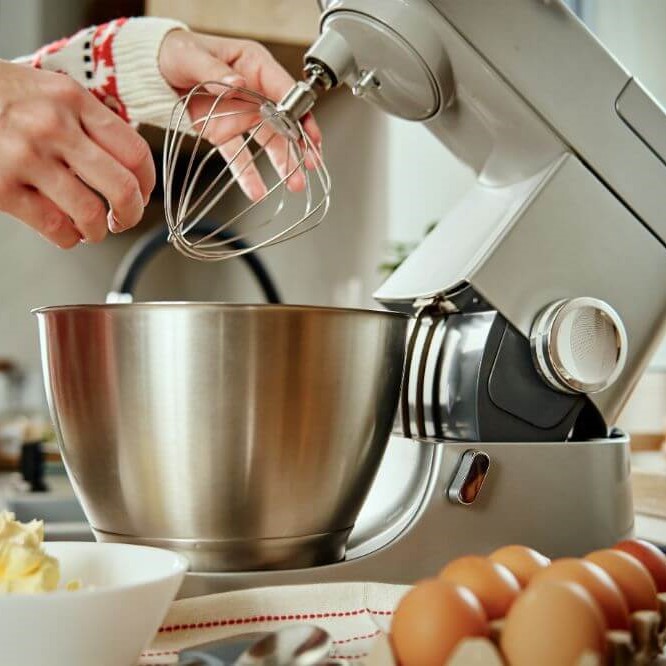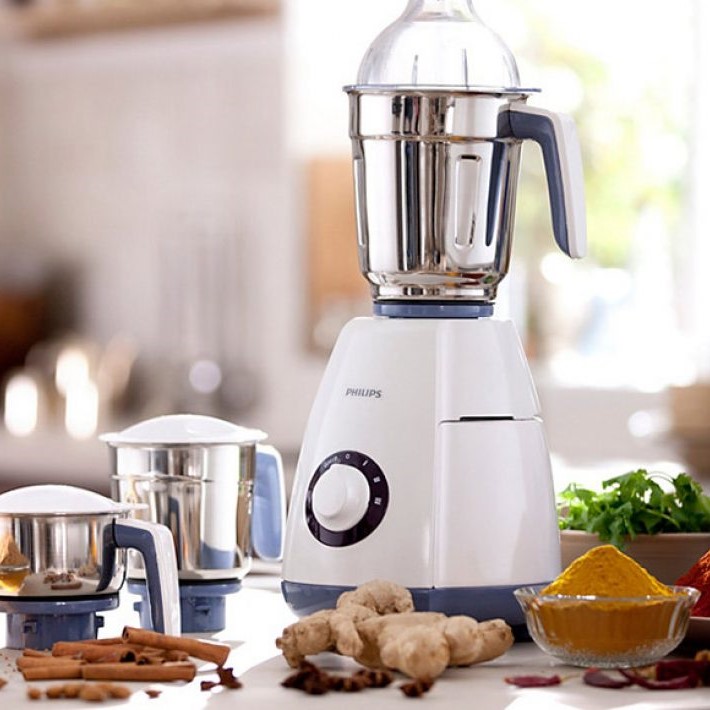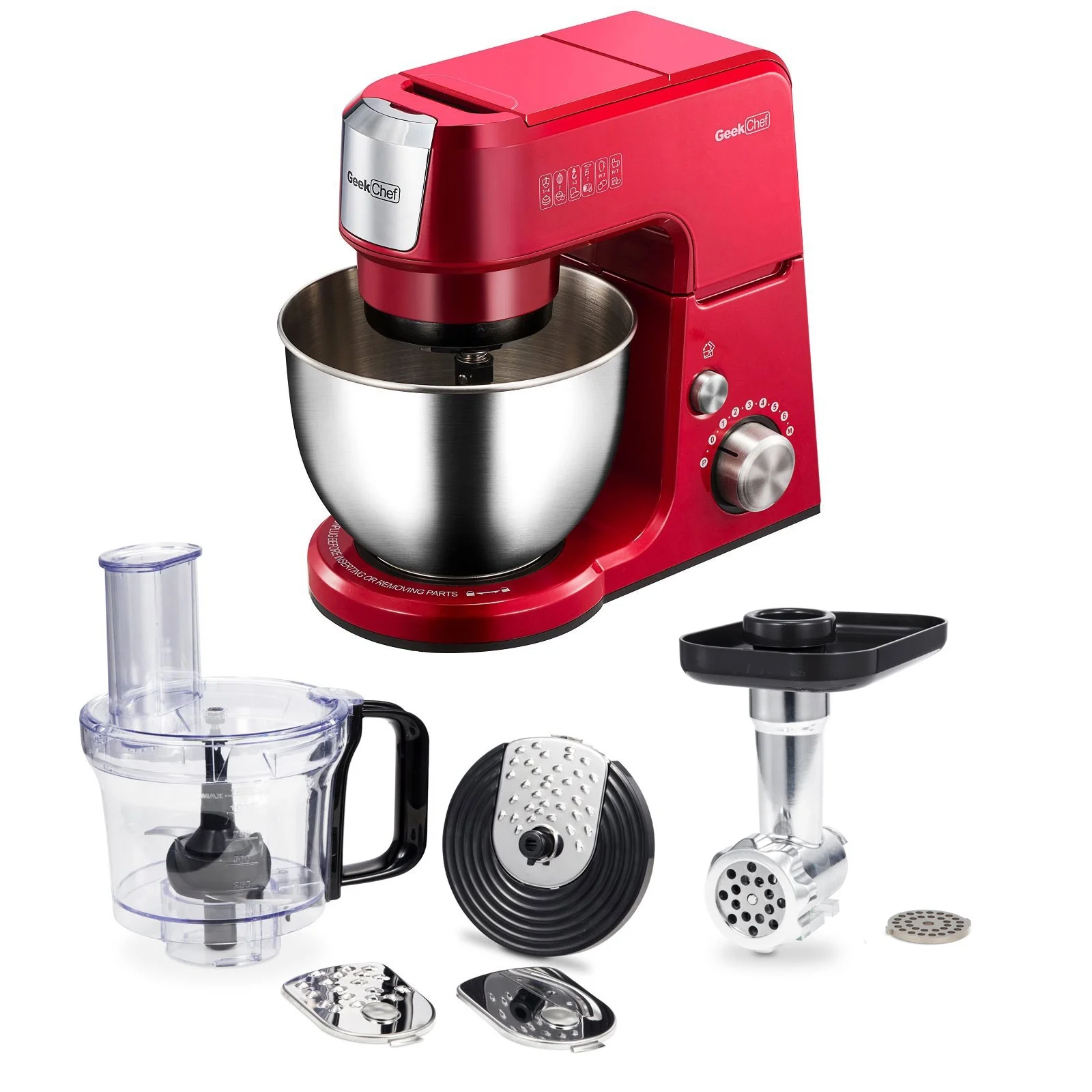
Introduction to Kitchen Appliances
The modern kitchen is a hub of activity, where efficiency is key. Choosing the right appliances can transform cooking from a chore into a pleasant experience. With so many gadgets on the market, it’s tough to know which ones will best serve your needs. Understanding the difference between food processors and mixer grinders is a good place to start. These two appliances may seem similar, but they cater to different tasks in the kitchen. When trying to decide between a food processor and a mixer grinder, consider what you’ll be making most often. This will help you pick the right tool for your culinary adventures.

Key Differences: Food Processor vs Mixer Grinder
When facing the food processor vs mixer grinder debate, it’s crucial to note their distinct uses. Mixer grinders are primarily for blending and grinding. They’re handy for creating batters, pastes, and purees. Their sharp blades make quick work of dry spices, nuts, and wet food items. Food processors, on the other hand, excel in chopping, slicing, dicing, and grating. With various attachments, they’re ideal for preparing vegetables, fruits, and meats, simplifying meal prep.
Mixer grinders are often simpler to use, with fewer attachments than food processors. They’re typically easier to clean, too, as they have less nooks and crannies. In contrast, food processors come with multiple blades and discs, providing versatility but also requiring more cleaning effort.
In terms of energy consumption, mixer grinders usually consume less power. This is due to their simpler function of mainly grinding and blending. Food processors can be more energy-intensive, given the broad tasks they can perform. However, it’s possible to find energy-efficient models with a good energy rating.
As for the cost, mixer grinders generally have a lower price tag. They’re more straightforward in design and function, which reflects in their cost. Food processors tend to be pricier because of their multi-functionality and the variety of attachments included.
In summary, the main differences between these two appliances are their intended use, ease of cleaning, power consumption, and price. When choosing between the two, it’s essential to consider what tasks you’ll be performing more often in your kitchen and what fits your budget.
Understanding the Functions of Mixer Grinders
Mixer grinders serve specific purposes in the kitchen. Here’s a breakdown of these functions:
- Grinding: Easily grind dry spices, nuts, and coffee beans.
- Blending: Make smooth purees, pastes, and juices from fruits and vegetables.
- Mixing: Prepare batters for cakes and dosas efficiently.
- Kneading: Some advanced models even assist in kneading dough.
These varied functions make mixer grinders versatile for everyday cooking. They handle both wet and dry ingredients, streamlining many cooking processes. Check the mixer grinder’s specifications before purchase to ensure it matches your kitchen needs.
Exploring Food Processor Capabilities
Food processors bring a range of functionalities to your kitchen table. Let’s delve into what these appliances excel at:
- Chopping: They do quick work of cutting veggies and fruits.
- Slicing: Get even slices of produce in no time.
- Grating: Cheese or vegetables, they grate them to your desired fineness.
- Dicing: Chop up ingredients into uniform cubes for stews and salads.
- Mincing: They can mince meats, making them versatile beyond just veggies.
- Kneading: Some come with dough blades for tackling tough dough.
- Emulsifying: Whip up salad dressings and mayos with ease.
These capabilities make the food processor a highly adaptable ally in cooking. With such variety, you can tackle multiple recipes with ease. If you find yourself often prepping large meals, a food processor could be the time-saver you need. Remember to explore models with different blade options to get the most from your appliance.
Ease of Use and Cleaning
When choosing between a food processor and a mixer grinder, ease of use and cleaning are essential factors. Mixer grinders are known for their simplicity and user-friendly design. With fewer parts and attachments, they generally require less time to clean, making after-cooking tasks less of a burden. On the other hand, food processors come with a variety of blades and discs that offer great functionality but can also amount to more cleaning. They often have different pieces that need individual cleaning, which might be more time-consuming.
For those who prioritize quick and straightforward cleaning, mixer grinders are typically the better option. Their simpler structure means you’ll spend less time taking them apart and scrubbing components. This can be especially beneficial for busy individuals or minimalists who prefer fewer gadgets in the kitchen.
Moreover, models with dishwasher-safe parts can further simplify the cleaning process. Whether you’re rinsing off a single blending jar or multiple food processor attachments, look for appliances that are easy to disassemble and safe to put in the dishwasher.
In terms of daily operation, mixer grinders usually have an intuitive interface, with knobs or buttons for speed control, making them accessible even for beginners. Food processors, while offering more functions, may require a brief learning curve to make full use of their features and attachments.
Choosing an appliance that aligns with your cooking habits and cleaning preferences is crucial. Go for a mixer grinder if you prefer a no-fuss cleanup. Choose a food processor if you need diverse functions and don’t mind the extra cleaning time.
Considerations for Space and Attachments
When purchasing a kitchen appliance, space is a crucial factor. Food processors and mixer grinders come in various sizes. This means they can take up a significant amount of counter or storage space. Therefore, it’s important to assess the space available in your kitchen before making a decision.
Space Requirements
Food Processors: They often have multiple attachments and bowls. Thus, they require more room for storage. Check if the size of the processor fits the dedicated space in your kitchen.
Mixer Grinders: Generally, these are more compact. They fit easily into smaller spaces and are simpler to store.
Attachment Versatility
With food processors, you get several blades and attachments. These range from slicing discs to dough blades. They offer versatility but also need organizing and storage space. Mixer grinders usually come with standard jars and maybe a few extra blades. Their simplicity means fewer worries about storage.
Choosing kitchen appliances is about balancing needs and available space. Consider both space and attachments when selecting between a food processor and a mixer grinder. This will ensure efficient utilization and prevent cluttering.
 Examining Power Consumption and Energy Efficiency
Examining Power Consumption and Energy Efficiency
When picking a kitchen appliance, consider how much energy it uses. Energy efficiency matters for your bills and the environment. Mixer grinders and food processors differ here, too.
Energy Consumption and Mixer Grinders
Mixer grinders don’t use much power. They are often designed to operate on lower watts, making them energy savers. With options starting from 250 Watts, they fit different power needs.
Food Processors and Energy Efficiency
Food processors may need more power. This is because they do more tasks. But, many models are made to be energy efficient. Look for a good energy star rating. This means they use less power while working just as well.
When buying, check the wattage and energy ratings. A lower wattage mixer may cost less to run. A high-rated energy-efficient processor can save energy over time. Choose the one that’s best for your cooking style and electricity budget.
Comparing Prices and Value
When assessing kitchen tools like food processors and mixer grinders, cost plays a key role. Price tags vary based on features, power, and attachments. Understandably, higher functionality can hike the price. Mixer grinders are generally more wallet-friendly, while food processors, with their array of capabilities, lean towards a higher price range.
Price Range for Mixer Grinders
Mixer grinders come in different models and power ranges, which affects their cost. Basic versions are available at lower prices, starting around 2,500/- for the simplest units. Mid-range grinders may cost around 3,500/- to 5,000/-, with advanced models reaching up to 7,000/-. These prices reflect the appliance’s power and the number and type of jars included.
Cost of Food Processors
Food processors carry a heftier price tag due to their versatility. Prices can start at about 4,000/- and go up to 15,000/- or more for premium units. The price escalates with the number of functions, the robustness of the machine, and the quality of attachments.
Long-Term Value
Assess the long-term value when comparing costs. A mixer grinder might be cost-effective and cover most needs for grinding and blending. However, investing in a food processor could offer more functions and reduce prep time, making the extra cost worthwhile for those who cook regularly.
The Verdict on Value
Mixer grinders excel in straightforward tasks and are valuable for their simplicity and lower power consumption. Food processors offer extensive features but also demand more upkeep and storage space. Each has its merits, and the better value is the one that meets your cooking requirements within a reasonable budget. Remember, investing in the right appliance saves time and money in the long run.
Advantages of Using Mixer Grinders
Mixer grinders offer diverse benefits, making them essential in many kitchens. Here’s an overview of their advantages:
- Versatility: They can grind, blend, and mix a variety of ingredients, from spices to batters. This makes them versatile for everyday cooking.
- Space-Saving: Most mixer grinders are compact, fitting easily in small spaces. This is ideal for smaller kitchens.
- Energy Efficiency: They usually require less power, saving on electricity bills. With many models available, you can choose one that fits your power preferences.
- Cost-Effective: Compared to food processors, they are often more affordable. This makes them a good option for budget-conscious buyers.
- Ease of Use: Mixer grinders are user-friendly, with intuitive controls suitable for any skill level. Operating them is straightforward.
- Easy to Clean: With fewer parts and simpler designs, mixer grinders are easier to clean. Many models have dishwasher-safe parts, further simplifying the process.
- Speed: They work quickly, saving time when making pastes, juices, and batters. This is helpful for busy people who need to prepare food in a hurry.
When considering a kitchen appliance purchase, weighing the benefits of a mixer grinder can help you decide if it’s the right choice for your cooking needs. Their blend of functionality, convenience, and economy makes them a popular pick for many home cooks.
 Benefits of Owning a Food Processor
Benefits of Owning a Food Processor
The food processor is a kitchen powerhouse. Here’s why it’s worth considering one for your cooking routine:
- Time Efficiency: Quickly chops, dices, and slices, speeding up meal prep significantly.
- Versatility: Handles a variety of tasks like grating cheese, kneading dough, and making purees.
- Consistent Results: Delivers uniform cuts for professional-looking dishes every time.
- Powerful Performance: Excels in tasks too tough for other appliances, such as kneading stiff dough.
- Comprehensive Tool: Includes different blades and attachments for tailored cooking needs.
- Helpful for Large Meals: Processes big batches of ingredients, useful for family dinners or parties.
- Innovative Features: Comes with settings that cater to specific food types and prep styles.
- Reduces Manual Effort: Saves your energy by doing the rigorous tasks of cutting and blending.
By investing in a food processor, you ease your cooking process and open up new possibilities in the kitchen. From quickly whipping up salsas to effortlessly mixing dough, this appliance is an asset for both seasoned chefs and cooking novices alike.





